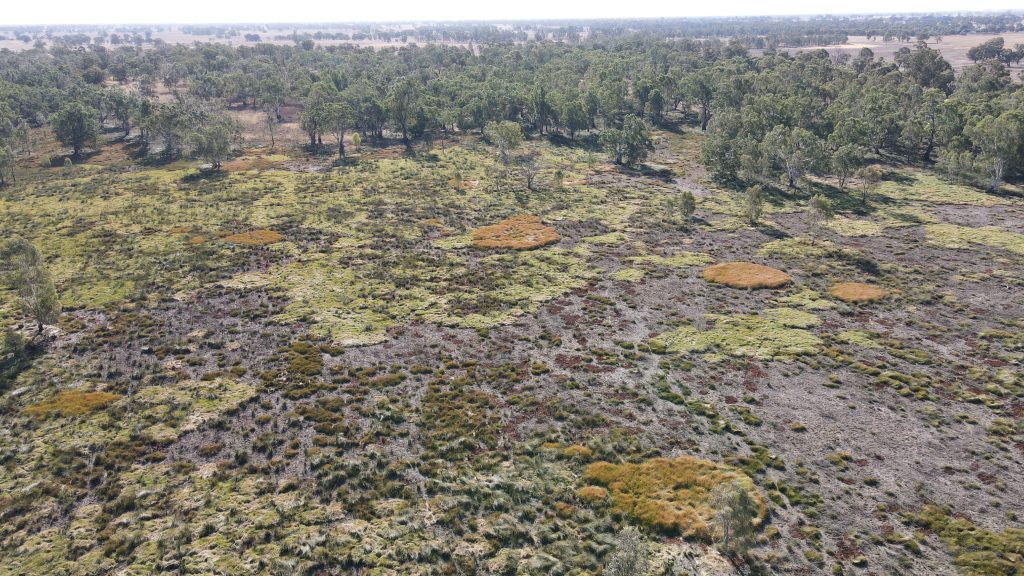A story of lucky timing and the legacy of the remarkable spring flows at Rowan Swamp
On 16th March 2023, it was great for myself and Lachie to catch up with people from a range of organisations who have taken an interest in the restoration project at Rowan Swamp, hosted by the Reserve managers Parks Victoria. This was a chance for us to tell the story of the restoration trial so far and share what NGT has learned about the eco-hydrology of this important wetland. Below is the group having a closer look at the trial structure, before heading upstream to wander around the wetland proper.

As you might recall from our earlier updates, the trial structure got a serious workout last spring after we were lucky to get it installed just before the first flows arrived. Now, despite looking a little weathered from the experience, we think it has held up very well!
If you look carefully above, you will notice that the bottom of the gauge board in the channel upstream of the structure is not covered with water. As the 0 cm level corresponds with the bed level of the main wetland (which this channel had eroded below), we didn’t expect to see any water in the wetland, despite all of this water still backing up at the structure location. This was confirmed as we walked upstream, and is also shown in the aerial image below. The area of the wetland that dried up most recently, within the past few weeks, can be seen in the left of the image, still tinged with a green colour. The structure can be seen in the channel, in the mid-right of this photo.

The general impression that everyone came away with, was of a wetland that has been completely transformed. The combination of sustained flows and the reinstated natural sill level (water retention height) of the wetland triggered an explosion in wetland life. While the breeding waterbirds have since left the site and the frogs have now bunkered down again, this impact can be seen in the vegetation that has responded and still persists. For example, at our gauge board in the swamp itself, this transformation from when the flows arrived in August 2022 until now (March 2023) is dramatic – as shown below. Please click to the second page in the pdf viewer to see the transformation.
PP11-gauge-boardOne of the attendees who has taken a close interest in the swamp, botanist Sally Mann, described how she saw the understory and wetland vegetation of Rowan Swamp gradually transform over the past 6 months. Indeed, nowhere has that transformation been as stark as in the deepest part of the wetland, as shown.
PP7-deepest-wetland-area-tranformedWhen seen from above, this area is a sea of colour, representing some of the common wetland native vegetation that has re-established in the heart of the wetland. Sally tells us that the most common plants in the image below, contributing to the beautiful colours and textures, are:
- Eleocharis sphacelata
- Cycnogeton procerum
- Myriophyllum crispatum
- Eleocharis acuta and Eleocharis plana
- Glyceria australis
Can you work out which is which?

To give you a clue, here are a couple of the species up closer…


Finally, to close out the colourful end to this update, here is this same area, shown from directly above.

Stay tuned, as we’ll have further insights to share about the project at Rowan Swamp over the next couple of months.
This project is supported by Nature Glenelg Trust, through funding from the Australian Government’s Murray–Darling Healthy Rivers Program and Parks Victoria.

